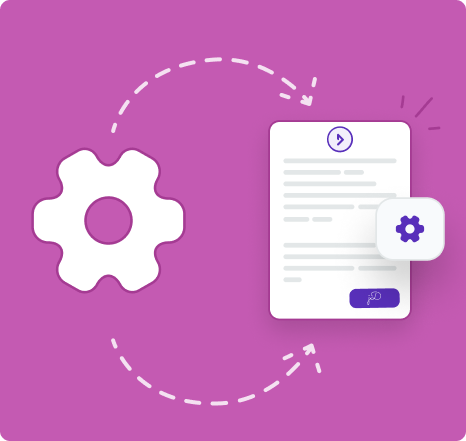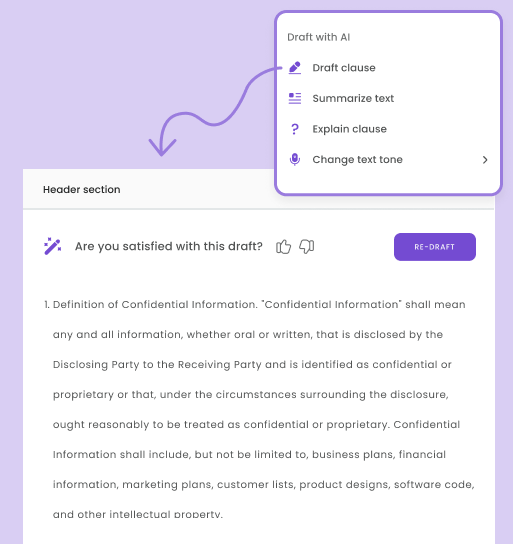When you’re sick, you can treat the symptom or the problem. In most cases, you will treat the causes so the symptoms go away as a result.
That’s the same thing with root cause analysis. You have a problem, usually a recurring one, that needs to be treated at the cause so you stop spending time, energy, and money on the symptoms.
In this guide, you’ll get a deep understanding of how to do root cause analysis so recurring issues disappear.
What is Root Cause Analysis?
Root Cause Analysis (RCA) is the process of digging deeper. In other words, it helps you move beyond quick fixes so you can solve issues at the core. Instead of just patching things up, you figure out why something went wrong in the first place.
Difference Between Symptoms and Root Causes
Here’s the thing: most problems show up with symptoms first. Maybe your customers are complaining about delayed deliveries. That’s a symptom. The real issue could be something deeper, like outdated software, poor inventory tracking, or a lack of training for your logistics team.
Symptoms are what you see. Root causes are what create the problem. If you only treat the symptoms, the issue is going to come back over and over again. When you tackle the root cause, you’re eliminating the problem for good.
Objectives of RCA
The goal of RCA isn’t just to answer “What went wrong?” it’s to get to “Why did it go wrong, and how do we make sure it never happens again?”
Here’s what you’re aiming for:
- Identify the root cause of a problem, not just the obvious surface-level issues.
- Understand the chain of events that led to the failure.
- Develop solutions that are preventive, not just reactive.
- Improve systems and processes so your business runs smoother in the long term.
Benefits of Identifying the True Cause
When you take the time to uncover the real cause, a few things should happen:
- You reduce recurring problems, which saves time, money, and stress.
- You build stronger processes, making your operations more reliable.
- You boost team confidence because they see that issues are taken seriously and solved properly.
- You create a culture of learning, not blaming—people are encouraged to fix, not fear.
In short, RCA is your tool for smarter problem-solving. It helps you work less on putting out fires and more on making sure the fire doesn’t start at all.
When to Use Root Cause Analysis
Root cause analysis isn’t always the first thing you should do. It’s most valuable when something serious or repetitive disrupts the flow of your work.
It’s not meant for small, everyday glitches. You save RCA for situations where the stakes are higher or where quick fixes just aren’t sticking.
If you’re facing a problem that keeps coming back, or one that causes real frustration, inefficiency, or even risk, that’s your cue to dig deeper.
Trigger Events (e.g., recurring problems, safety incidents, performance drops)
There are a few key types of events that should immediately put RCA on your radar. For instance, if a process keeps failing in the same way despite multiple fixes, you likely haven’t addressed the underlying issue.
Safety incidents or near misses are also classic triggers. This is especially true when there’s potential for harm.
Performance drops that seem sudden or hard to explain also qualify, particularly if they affect critical KPIs or customer satisfaction.
In these cases, it’s not enough to put a patch on the problem. You need to figure out why it happened in the first place.
Indicators That RCA Is Needed
Sometimes, there’s no single dramatic event, but instead, a slow buildup of signs. Maybe your team keeps solving the same issue over and over without results. Maybe every fix leads to a new problem. Or maybe people are spending more time reacting than improving.
When confusion, finger-pointing, or frustration become the norm and nobody can clearly say what’s causing the disruption, that’s a strong signal you need RCA. It’s a way to stop spinning your wheels and get some clarity.
Considerations for RCA
Involve Cross-Functional Teams
Problems don’t always stay neatly in one department, and neither should your RCA. When you bring in people from different functions, such as operations, IT, customer service, compliance, etc., you get a broader view of what’s going on.
Different teams see different parts of the process, and their perspectives can help uncover root causes you’d never spot on your own. It’s not just about the quantity of input. It’s the variety that matters.
Ask “Why” Multiple Times to Dig Deeper
One of the simplest (but most powerful) tools in RCA is just asking “Why?” over and over again. This technique, often called the “5 Whys,” helps you push past symptoms and keep drilling down until you uncover the true cause.
For example, if a shipment was late, asking “Why?” might reveal a missing part. Ask “Why?” again, and you find out the supplier sent it late. Keep going, and you may discover an unclear ordering process or a system error that’s been overlooked.
Each “Why” peels back another layer until you get to the foundation.
Sticking to these principles ensures your RCA is more than just a checklist—it becomes a problem-solving mindset. One that actually improves how your business runs.
Steps to Perform Root Cause Analysis
Root Cause Analysis isn’t just about asking “Why?” until something sticks. No, it’s a structured process that takes you from confusion to clarity.
When you follow the right steps, you don’t just fix problems. Instead, you understand them, address them, and prevent them from popping back up. Here’s how to walk through each step the right way:
1. Define the Problem Clearly
Before you can fix anything, you need to know exactly what you’re dealing with. Start by clearly stating what’s going wrong. What is happening? Where is it happening? When does it occur? And who is being affected? The more specific you are, the better. A vague problem statement leads to a vague analysis. Get this part right, and you set the foundation for everything else.
Don’t think you need to do this part on your own. Many problems are multi-faceted and require input from multiple people. Work together to create a comprehensive problem statement that will serve you well.
2. Gather Data and Evidence
Next, you want to back up your understanding with hard facts. This is where you dig into reports, logs, customer feedback, or any other data that helps you paint a full picture of the problem.
Observations from frontline staff are gold here, too. Look for patterns, anomalies, or anything that stands out. The goal is to get a realistic view of what happened, not just what people think happened.
If possible, record your interactions so it’ll be easier to review and catch things you may have missed in the moment.
3. Identify Possible Causes
Now that you’ve got the problem and the evidence, it’s time to explore what could be causing it. This is usually a team activity where you get people together to brainstorm possible causes.
At this point, you’re casting a wide net. No idea is too small or too obvious. It helps to use a tool like a cause-and-effect diagram (also called a Fishbone Diagram) to keep things organized and make sure you cover every angle.
There’s a statement that bears repeating. You don’t know where the problem is coming from until you solve it so nothing is too small. Another thing you may realize during this process is that the root cause is made up of many little problems that turn into a big one.
4. Determine the Root Cause
Once you’ve got a list of possible causes, now comes the detective work. Use methods like the 5 Whys to keep drilling down until you hit the real source. Don’t just stop at the first “obvious” answer. Keep asking why until there are no more logical steps to explore.
Along the way, validate your assumptions with data. If the facts don’t support the theory, toss it out. You’re not guessing here. You’re investigating.
5. Develop and Implement Solutions
With the root cause in hand, it’s time to put together a solution that addresses it, not just the symptoms. Brainstorm with the team again, but this time focus on corrective actions.
What needs to change to stop this problem from happening again? Assign responsibilities, set clear deadlines, and make sure everyone knows what part they play in the fix.
The approach you take will be dependent on the nature of the problem and the resources available to you. The first solution may need to evolve over time, and that’s alright. Adopt a continuous improvement mentality, and things should work out sooner rather than later.
6. Monitor Results
Even after the fix is in place, your work isn’t over. You need to make sure it’s working. Track key metrics or indicators tied to the original problem.
Is the issue still popping up? Has performance improved? If things don’t change, that’s a sign you didn’t quite hit the root cause or the solution isn’t sticking.
Keep monitoring until you’re confident the problem is resolved and won’t resurface. Following these steps keeps your RCA grounded, methodical, and—most importantly—effective.
Conclusion
Some problems refuse to go away and that’s where RCA comes into play. This guide has given you an overview of what it is. More importantly, you have a process you can follow to implement it in your organization.
Keep in mind that it’s not usually a one-and-done thing. The most important part is continuous monitoring and improvement.
Let me know what you think in the comments, and don’t forget to share.




